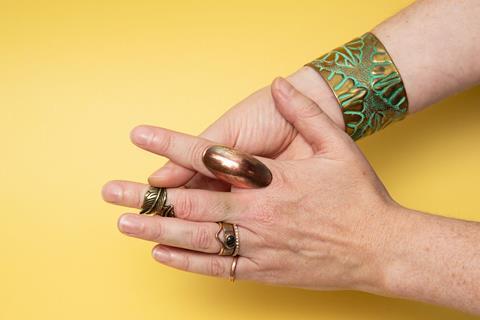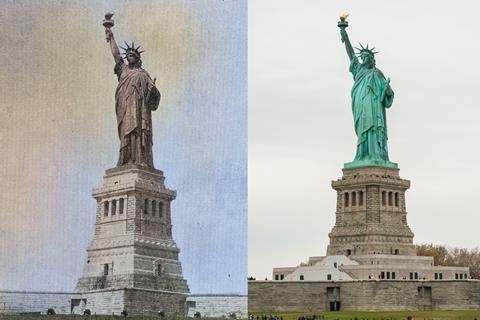From warships to computer chips, discover the metal’s many uses throughout history
If you’ve ever worn copper jewellery, you might have noticed a greenish colour left on your skin. The good news is that you aren’t turning into the Incredible Hulk or Elphaba from Wicked but seeing some chemistry in action. In fact, it’s the same chemistry you can see on one of the most famous monuments in the world.

Copper was one of the first elements that humans discovered. It exists on its own in nature and is easy to obtain from its ore by smelting. We have been using copper for at least 11,000 years. It was even the subject of potentially the oldest complaint in human history. In a letter written 3800 years ago in the Babylonian city of Ur, a man named Nanni complained to a merchant, Ea-nāṣir, that his copper was of poor quality.
Useful properties
We can see why copper is important by looking at the periodic table. It is the lightest metal in group 11 (which also contains silver and gold). It is a transition metal, so it forms metallic bonds and shares delocalised electrons throughout its structure with neighbouring atoms.
Copper is so valuable as a commodity that people have even stolen copper from sunken warships to sell on to scrap merchants
Transition metals fill the d electron subshell, which make them likely to form covalent bonds. However, copper is only missing one electron to fill its subshell, so it can borrow from its outermost shell. This means it lacks the strength of other metals, has a lower melting point and is easy to work into other shapes, all while keeping the characteristics of a metal; a shiny surface and a good conductor of heat and electricity.
As we can easily shape copper, it is one of the most in-demand metals in the world today. You can find it in electric circuits and wiring, copper pipes, cookware, computer chips and even jewellery. Copper is so valuable as a commodity that people have even stolen copper from sunken warships to sell on to scrap merchants. It is also useful for medical equipment because of its antimicrobial properties – and this is linked to the reason copper turns green.
Copper’s chemical reactions
Metals tarnish because the outer surface reacts with oxygen in the air in an oxidation–reduction reaction. Usually, copper reacts to form copper oxide, becoming darker and duller. But if there are other elements in the environment, different compounds are formed.
Copper can react with sulfur in the air from pollutants to form sulfides and sulfates, with saltwater to form chlorides or the sweat on your skin to form chelates. These compounds all have slightly different colours, which can vary from blue to green, and form a thin layer (or patina) of copper carbonate. This phenomenon is called verdigris. However, because the patina is quite thin, it is easily brushed off – leaving the green mark on your hand.

A protective layer
In medicine, oxidation reactions can occur between copper and the cell walls of bacteria, which causes them to pop and kill the microbe. This is why some wound dressings contain copper or silver. In architecture, designers plan for these oxidation reactions to happen and use the resulting change in colour to improve the look of buildings and create a natural, weather-resistant layer. Sometimes, however, it can take people by surprise.
When the Statue of Liberty was built in 1886, it was a dark, red colour made from copper beaten onto an iron frame. Slowly the statue oxidised, with the aid of saltwater and pollution from New York City, turning the statue into its now iconic green colour. This change shocked New Yorkers and the US Government called in the army and spent $2 million trying to find a way to turn the statue back to its original colour. Eventually, the engineers persuaded the government that the lime green patina was protecting the Statue of Liberty and that it should stay.
So the next time you get a greenish hue on your skin from wearing copper jewellery, it’s down to a chemical reaction between the metal and the natural oils you produce on your skin. What’s more, it’s evidence of the chemistry that humans have been using since before recorded history.
Now, cop a load of this TikTok:
@royalsocietyofchemistry Copper load of this! 🗽 The Statue of Liberty wasn't originally green! New York's iconic landmark is made of #copper, and, as Jo explains, the reason why she's now green is down to chemical reactions between the #metal and air around her. This magical colour change took 20 years to take shape 💚 You would see this in action if you went running with a copper ring or bracelet. Your sweat would react with the #jewellery and cause your skin to go green 🤢 #chemistry #learnontiktok #usa #newyork ♬ original sound - The Royal Society of Chemistry
Kit Chapman
Cop a load of this TikTok: bit.ly/3CDTydZ














1 Reader's comment